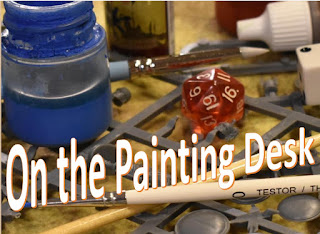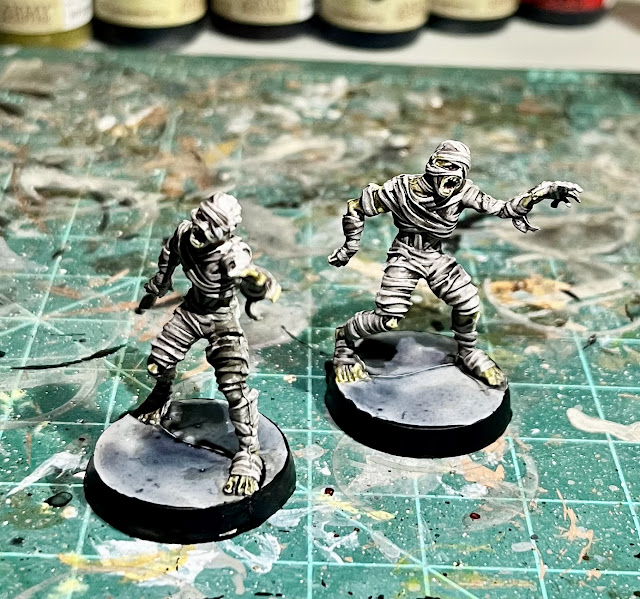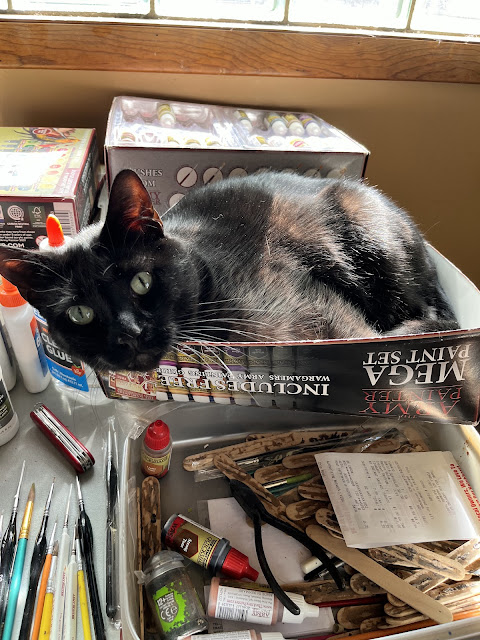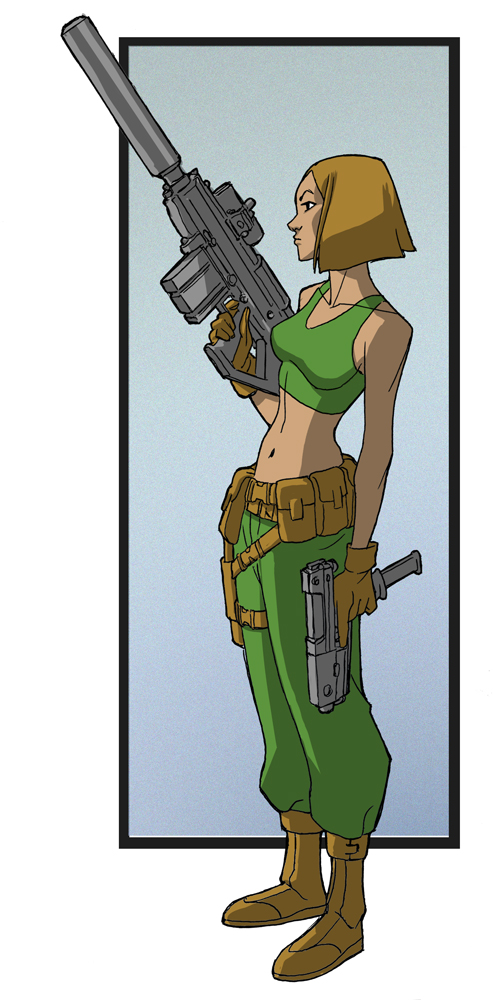This came out in early 2024 (or was it late 2023?) as part of the the Osprey Blue Book series. I was happy to see another Historical themed entry in the series! I tend to prefer the more Historical focused games as they seemed like a nice way to springboard me into a new genre of wargaming in a way that the Sci-fi/Fantasy Blue Books don't manage for me. A bias for sure! Anyway, the ACW has been one of those genres that I had some mild interest in, but did not want to invest a bunch of money in thick hardbacks and games only to learn that it didn't do much for me. Therefore, I was eager to get my hands on this game. Despite this eagerness, I was delayed in picking it up. My FLGS seemed to have a hard time getting it into my hot, little hands. Eventually, I managed to snag a copy. Better late than never!
It is with some pride that I note this is an 80 page book. I tend to think that my work with Castles in the Sky opened up Osprey to the idea of having the Blue Book series expand from 64 to 80 pages. That left more room for a rule set to breath, add some needed details, and leave some more room for art and charts. However, that added size also means they are now a few dollars more as well. I am interested to see if Osprey continues this trend of 80 page books, or goes back to the 64 page of the earlier series. I can see benefits to both approaches as a gamer, a designer, and as a buyer.
With that said, these rules are intended for use at the brigade and/or divisional level engagements. That gives it a large scope for various battles of the American Civil War. The game design notes indicate that the rules are intended to be streamlined and quick-play, but with appropriate historical details, and with a view to using Miniatures. That sounds good to me!
So, let's move double time to the sound of the bugles, and rally around the flag as we drive forward into these rules!
Things That I Liked
The first thing I noticed as I just flipped through the book was that this book has some very large diagrams of play. Nothing major, but it serves to help illustrate a lot of key points. I hope Osprey continues on this track as the Blue Book series often shies away from this type of illustration as they take-up a lot of space, are not easy to produce, and cost extra cash. However, they are very helpful in illustrating key points of the rules.
One of the key features of this game is a Command Point system called an Aide-de-camp. These guys were essentially messengers that tried to get orders from the commander to the units. The game abstracts them into a dice roll, to represent how many orders or commands a General can send to his units. The way these ADCs are used is to either enhance your score on the initiative roll, or to give bonuses when giving orders to units. It is possible in this game for a player to get a "double turn" thanks to the Initiative roll and use of ADCs.
I always love a terrain system that is streamlined and simple to apply!
Movement and formation is a critical component of these rules and where much of the focus of the game is. Shooting and melee are secondary to maneuver. I approve this approach. There are a lot of good, details for deployment that don't seem to bog down the game like I frequently see in other Horse-and-Musket games.
Shooting or Melee is rolling a D10 and trying to get a 6+ with various modifiers. There is not a huge chart of them, but a Quick Reference sheet is a good idea. Also, choosing the right type of artillery ammo to fire and when makes a difference in this game.
Things I Did Not Like
Of note, the game is written in a very "Gentleman Playing a Game" way. If offers a lot of suggestions and tools for the game, but it does not mandate there use or adoption. You can see this with their Fog of War rules, Victory Conditions, etc. I have no problem with this friendly toolbox format, but I can see others not liking the approach. The game is very clear that this is not a competitive ruleset, but all these suggestions instead of rules may confuse some folks on what is and isn't suppose to take place in a game.
This game uses base removal. Each damage removes 1 model, but typically you only remove a full base at 6 wounds. This means your big units of 24 or so models will slowly get smaller as their effectiveness is reduced. It also means that in addition to your big table, you will need a side board for casualties. I typically prefer no base removal and using damage markers or tokens. I spent a lot of time painting these boys up, so I want them on table!
Meh and Other Uncertainties
This game is intended for large games. It is designed with 28mm models and recommends a table at least 6ft x 4ft. It does cover other scales briefly. However, 2 Brigades is considered a small game in this system. 2 Brigades is 4 to 8 Regiments of troops. Be warned, you might need a decent amount of figures to play.
Of note, pre-measuring is NOT allowed in this game.
Pictures of miniatures in action are really great! Thanks to Perry Miniatures for the photos. They set a pretty high standard for what these battles should look like!
The game uses an interesting Turn Sequence. It starts with Rallying units, moves to Artillery attacks, giving Orders, Movement, Shooting, and then Melee is last. Then play goes to the opposite side. I have been contemplating how turn sequence and order of operations can impact the way a game is played, so seeing a slightly different order of operations was interesting to me.
You will find a lot of rules familiar to Horse and Musket period gamers. Things like formations, command radius, and Officer Competency/traits, types of artillery fire, etc. These are required to have a good game of Horse-and-Musket. However, they do a good job of tailoring these to ACW formations that you read about in the field. It also has one-level of formation deeper than most rulebooks go. How many times do you see Obligue Movement details!
There are three scenarios. 1 is a "generic" open battle. The other two are actual engagements of various sizes complete with an Order of Battle and specific victory conditions.
There are about 11 pages of "advanced rules" in the back that help flesh out the character of an ACW battle. Things like Commander Traits, Trenches, Army special rules, etc.
Final Thoughts
Honestly, this game feels like Black Powder but better for ACW. A lot of the core rules will look pretty familiar with those who have played Black Powder. I mean, it has a failed command table which is a sure give-away! However, there is enough extra flavor, differences in turn sequences, and the ADC system to make it fit the period and give it some improved mechanics for Command-and-Control.
This game leans into the "historical" side of wargaming and less the "game" side of wargames. Therefore, if you are familiar with the expectations of a historical wargame of this period, these rules deliver. The ADCs are a nice added twist.
If you are looking heavier on the "game" side of historical wargaming than these rules may prove a bit more frustrating for you. There are no "army lists" or generic scenarios to pick-up and play. If you want to fight a battle, you will have to put in some work.
Or purchase all out games at the Blood and Spectacles Publishing Wargames Vault Page!





























